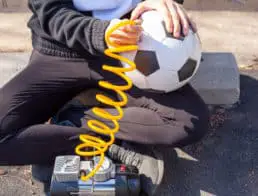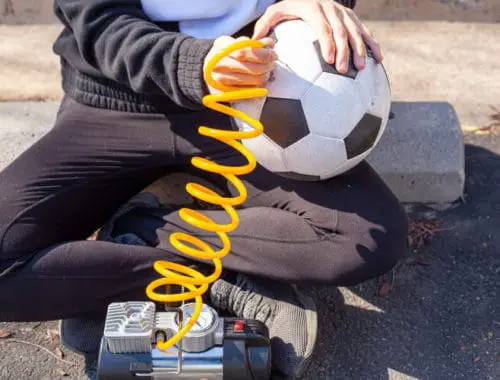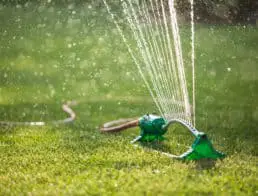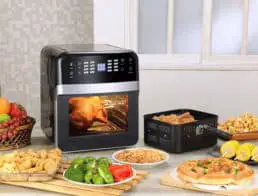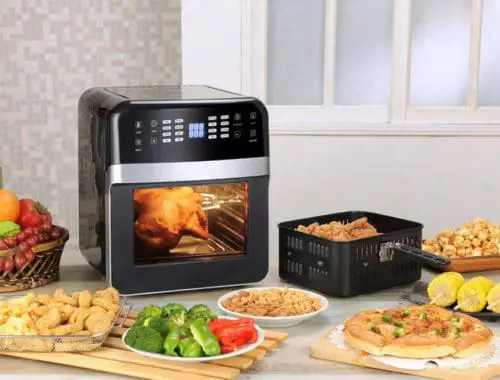You never know what you’ll be doing when the power goes out. One moment, you’re curled up on the sofa enjoying your favorite show—the next, you’re plunged into darkness.
It’s never a good moment when the power goes out. As well as your TV show suddenly cutting off, you’re going to be worried about how long the power outage will last—and whether the food in your refrigerator and freezer will be alright.
If you were in the middle of cooking when the power went out, that’s likely to be a major inconvenience. And if you have kids, a power outage can be a huge headache.
Here are 8 steps to take when the power goes out, so you can manage as easily as possible until everything’s back on again.
Step 1. Grab a Flashlight or Turn On Battery-Powered Lights

Image courtesy of Pixabay
The very first thing you should do is grab a flashlight or battery-powered light. Even if it’s still light outside, the power cut could last a while—so locate your flashlight while it’s still easy to do so.
Avoid using candles if you can, especially if you have young children—you don’t want to risk a fire on top of a power outage.
Step 2. See if Your Neighbors Have Power
Next, figure out whether the power is out in your whole street—or if it’s just your home. Look out the window or step out into your front yard. Do any of your neighbors have their lights on? Are the street lights on? What about TVs?
If you’re not sure whether the power is out for other people, too, knock on a neighbor’s door and ask.
If it’s just your own property that’s lost power, then move on to step 3. Otherwise, go straight to step 4.
Step 3. Check Your Circuit Breakers
A sudden power outage could mean that one of your appliances has blown a fuse and flipped a circuit breaker. (If only part of your home has lost power, then the problem is almost certainly with your circuit breakers.)
First, turn off any appliances that were previously running—especially anything you’d just plugged in.
Then, go to your electrical panel. This could be in the basement, utility closet, or kitchen. You might need a flashlight (or your cell phone) as it’s likely to be somewhere dark.
Check your circuit breakers and look for one that’s been tripped. It’ll be in the “off” position. Flip it back to “on”. This will usually be enough to fully restore power. Plug your appliances in one at a time and you’ll likely find out which is the faulty one (as it’ll trip the circuit breaker again).
Note: In some cases, the problem could be that you had too many appliances plugged in at once. Alternatively, you may have an issue with your electrical panel—in which case, it’s definitely best to consult an electrician.
Step 4. Turn on Your Generator if You Have One
Of course, if you have a generator, now’s the time to turn it on! A dual fuel generator uses gasoline and propane to create electric power for your home. This can be extremely useful during a power outage, especially if your area is frequently prone to outages.
Important: You must never run a dual fuel generator indoors as it will produce dangerous toxic fumes. Your generator needs to be set up outdoors, in a sheltered place.1
Step 5. Call Household Members Who Aren’t At Home
If any household members aren’t currently at home, call their cell phone and let them know about the power outage. Depending on how widespread the outage is, it may not be safe for them to drive home (e.g. if street lights are out).
Family members may also want to stay out, perhaps at a friend’s house, coffee shop, or mall, until the outage is over—rather than come home to a house without power. Be sure you’re checking on your parents and older family members without power who are more at risk, too.2
Step 6. Unplug Your Computer, TV, and Other Sensitive Electronics
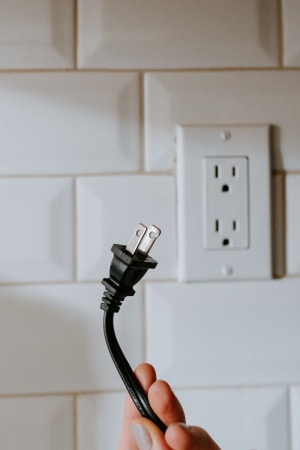
Image courtesy of Pixabay
If you have any sensitive, expensive electronics—such as a TV or computer—then unplug them. When the power comes back on, a power spike could otherwise damage them.
(If you’re using a surge protector for these electronics, then you don’t need to bother unplugging them.)
Step 7. Keep Your Refrigerator and Freezer Closed
To keep food as cool as possible, keep your refrigerator and freezer closed. The food in the refrigerator should stay cold for around four hours and a full freezer will keep food frozen for as long as 48 hours, so long as you don’t open it. 3
If you need to open your fridge or freezer to get food out, minimize the number of times you need to open it. Take everything out at once and keep it in a cool box if you won’t be using it immediately.
Step 8. Turn Off Unnecessary Phone Apps
You won’t be able to charge your phone with the power out. Even if you have a portable charger, you may have multiple devices that you want to keep charged up. Close any unnecessary apps on your phone and switch on “battery saving” mode if possible.
It’s also a good idea not to use your phone unnecessarily. You don’t want to drain your battery playing Candy Crush only to find out you need your phone to call family members or emergency services.
Step 9. Check if Water is Safe to Drink
Water purification systems may stop fully operating if there’s a power outage, so check with your state or local health department to see whether there are any recommendations for boiling or treating water in your area.
If you’re able to heat and boil water (e.g. on a camping stove), bring it to a rolling boil for a full minute. This will kill most potentially harmful organisms.
It’s a good idea to keep some safe, sealed bottled water on hand for use during power outages and other emergencies.
A power outage can be inconvenient and even scary—but by taking the above steps, you’ll be in a good position to handle the outage until your power comes back on.
Article Sources
Home Life Daily uses only high-quality sources, including peer-reviewed studies, to support the facts within our articles. Read our editorial process to learn more about how we fact-check and keep our content accurate, reliable, and trustworthy.
- Rose JJ, Wang L, Xu Q, et al. Carbon Monoxide Poisoning: Pathogenesis, Management, and Future Directions of Therapy [published correction appears in Am J Respir Crit Care Med. 2017 Aug 1;196 (3):398-399]. Am J Respir Crit Care Med. 2017;195(5):596-606. doi:10.1164/rccm.201606-1275CI
- Dominianni C, Ahmed M, Johnson S, Blum M, Ito K, Lane K. Power Outage Preparedness and Concern among Vulnerable New York City Residents. J Urban Health. 2018;95(5):716-726. doi:10.1007/s11524-018-0296-9
- Ready.gov. Power Outages. Ready.gov. Last updated March 3, 2021. Accessed August 16, 2021.



